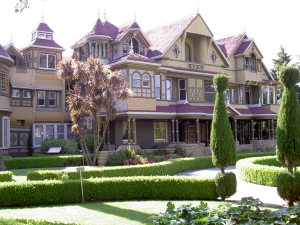What is Middle Class?
 We hear terms like Middle Class, Lower Class, Poor, Upper Class, 1%, and more almost every day. While many people have their idea of what socioeconomic status they fall into, there are actually preset definitions of how much you have to make in order to be in a particular bracket. The Pew Charitable Trusts defines middle class as those making 67-200% of the state’s median income.
We hear terms like Middle Class, Lower Class, Poor, Upper Class, 1%, and more almost every day. While many people have their idea of what socioeconomic status they fall into, there are actually preset definitions of how much you have to make in order to be in a particular bracket. The Pew Charitable Trusts defines middle class as those making 67-200% of the state’s median income.
What Makes Middle Class in Montana?
Most of us understand that the wages in Montana are near the bottom of the list. While we aren’t quite as low as some states (mostly southern states have lower median incomes), we still come in about 36th. According to recent data (from 2013), the median household income in Montana is $46,972. This accounts for families with one wage earner, two earners, and no earners. It averages all of those out to determine that number.
Using the definition set forth from Pew, that middle class is defined as 67-200% of the median household income of $46,972; we can arrive at what it takes to be middle class in Montana. It’s surprisingly lower than you would think.
Middle Class in Montana is defined as a household making between $31,316 and $93,944 per year.
For some those number may seem like good incomes; for others those numbers, especially the lower one, are absurdly low.
The Lower End of Middle Class
Let’s take a look at that lower number: $31,316. A household that brings in just this much is considered to be middle class. That is a shockingly low number.
Household income is defined as the total income of all working people in a household: including earnings, investment income, and government subsidies. Let’s suppose there are two wage earners in the household, no subsidies, and 2 children.
According to this data, a family of 4 would be earning $7.52 per hour each, and trying to support 4 people. Out of those wages (which are less than minimum wage) they have to feed, clothe, provide daycare, and all other household expenses. That is something that is really not feasible; and definitely wouldn’t be considered by many to be middle class.
Where Most Americans Fall
Despite these seemingly low wages, this is where the majority of Americans fall. Here is how that breaks down:
Poverty Class: Household income up to $24,000 – 15% Middle Class: Household income between $24,001 and $100,000 – 69% Upper Class: Household income between $100,001 and $250,000 – 15% One Percent: Household income over $250,001 – 1%Depending on geographic location, which source you look at, and a variety of other factors, these numbers can change a little bit. But taking strictly average, for a family of 4, we find that about 84% of Americans earn less than $100,000 annually.
How You Can Change Your Class Structure
The good news is that you are not stuck in one class! There are a lot of social factors that come into play, but nobody is stuck making a lower wage than he or she believes they deserve. If you want to move yourself up the socioeconomic ranks, here is how to do it.
Start Saving – There are few people that can get by without savings.
Start Investing – You need to plan for the long term. Investing is the only way to build sufficient wealth.
Start Earning – You aren’t stuck at just your low paying job. Side incomes make up a good portion of many people’s earnings.
Start Cutting – Trim the fat on your expenses. Negotiate interest rates, cut the cable, skip the latte. Dow whatever it takes.
Practical Taxes Can Help
No, we can’t give you a better paying job. But we can help with your taxes, or help you start a side business. We offer a variety of services including tax preparation, online payroll, business consulting, and much more. If you are serious about moving to the next class level, just get in touch by calling 406-894-2050.
But remember, more money doesn’t mean happier. It’s all about quality of life.

Interesting article about middle class.
Very interesting article.